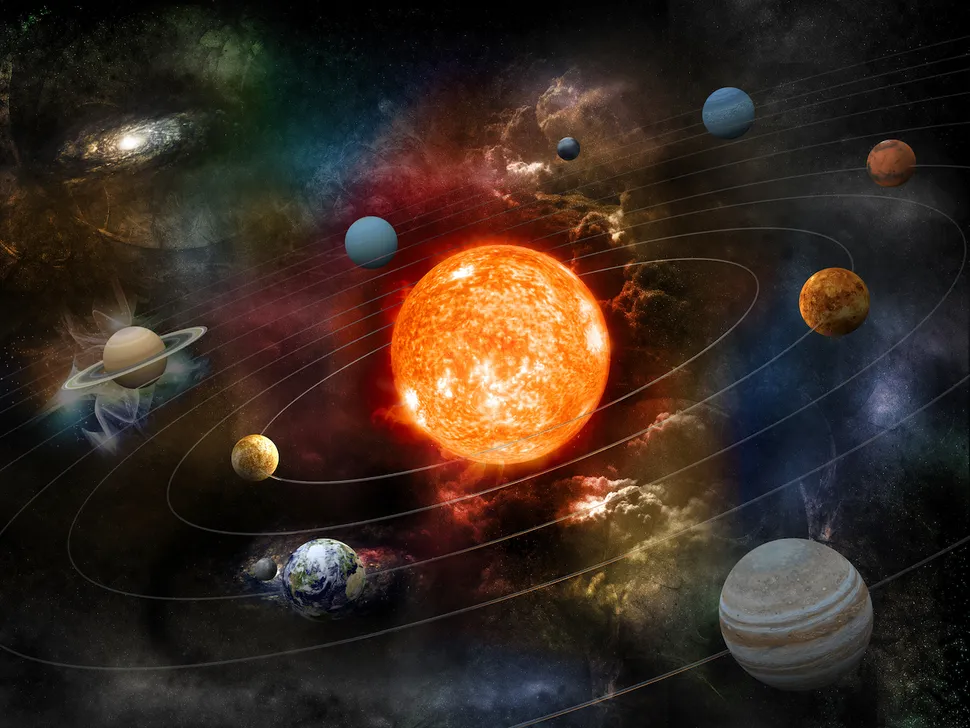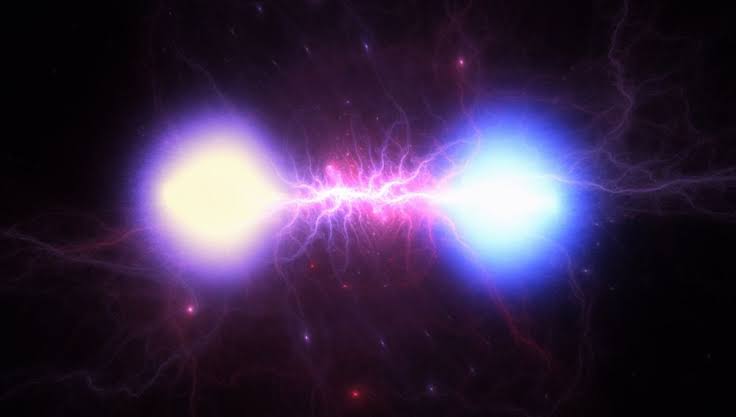Since the dawn of civilization, humanity has looked up at the night sky with wonder. The stars, planets, and galaxies above have stirred our imagination and shaped our understanding of existence itself. Astronomy, the oldest of all sciences, began with naked-eye observations—patterns traced among the stars, the rising and setting of celestial bodies, the cycles of the Moon. But as time advanced, so did our curiosity, and with it, our tools for exploration.
Each discovery in astronomy has changed not only what we know but how we think. They have transformed humanity’s view of space and time, of creation and destiny, of our place in the cosmos. The following ten discoveries represent monumental leaps in that cosmic journey—moments when humanity pulled back the curtain of the universe and glimpsed the truth beyond.
1. The Heliocentric Model – Earth Is Not the Center of the Universe
For much of human history, the universe was thought to revolve around us. The ancient Greeks, led by thinkers like Ptolemy, imagined a geocentric cosmos: Earth at the center, the Sun and stars circling it like perfect clockwork. This idea fit human intuition and religious belief—but it was wrong.
Then came Nicolaus Copernicus in the 16th century. A quiet, brilliant mathematician and astronomer, he dared to imagine a radical alternative: the Sun, not the Earth, stood at the center of the cosmos. His De revolutionibus orbium coelestium (1543) proposed a heliocentric model that would forever change humanity’s perspective.
It took courage and centuries of refinement by later astronomers like Johannes Kepler and Galileo Galilei for this model to gain acceptance. But once it did, it shattered the illusion of human centrality and opened the way for modern science. The Copernican Revolution wasn’t just about the motion of planets—it was a transformation in human thought. It taught us humility: that the universe doesn’t revolve around us.
2. Galileo’s Telescope – Seeing the Heavens as They Truly Are
When Galileo Galilei turned his homemade telescope to the night sky in 1609, he did more than observe—he revolutionized human perception. For the first time, the universe was not an abstract idea but a visible, tangible reality.
Through that small tube of glass, Galileo discovered moons orbiting Jupiter—proof that not everything revolved around Earth. He saw mountains and craters on the Moon, dispelling the belief in heavenly perfection. He observed the phases of Venus, confirming the heliocentric model, and even spotted sunspots blemishing the surface of the Sun itself.
These discoveries were explosive. They challenged centuries of religious doctrine and philosophical certainty. Galileo’s telescope turned faith into evidence, speculation into science. His courage in standing by his findings, even under the threat of persecution, made him the father of observational astronomy.
The telescope became more than a scientific instrument—it became humanity’s window into the vastness of creation.
3. Kepler’s Laws of Planetary Motion – The Music of the Spheres Made Real
While Galileo observed, Johannes Kepler calculated. Using Tycho Brahe’s meticulous data, Kepler sought mathematical patterns in the heavens. What he found was extraordinary: the planets moved not in perfect circles, as long believed, but in ellipses, with the Sun at one focus.
Kepler’s three laws of planetary motion revealed the deep harmony of celestial mechanics. The first law defined the elliptical orbits. The second, the law of equal areas, described how planets move faster when closer to the Sun and slower when farther away. The third law linked the time a planet takes to orbit the Sun to its distance from it.
These laws transformed astronomy from a descriptive art into a predictive science. They set the stage for Isaac Newton’s theory of gravity and forever united mathematics with the motion of the heavens.
Kepler’s genius lay in seeing the universe as a grand design—a cosmos governed not by divine whim but by elegant, universal principles. His discoveries made the “music of the spheres” more than poetry—it became physics.
4. Newton’s Law of Universal Gravitation – The Force That Binds the Cosmos
In 1687, Sir Isaac Newton published Philosophiæ Naturalis Principia Mathematica, one of the most important books ever written. In it, he revealed a force so simple yet so profound that it bound the heavens and Earth together: gravity.
Newton’s law of universal gravitation stated that every particle of matter in the universe attracts every other particle, with a force proportional to their masses and inversely proportional to the square of their distance. This law explained why apples fall to the ground and why planets orbit the Sun.
For the first time, the same physical laws that governed earthly motion also governed the stars. The cosmos was unified—a single, harmonious system running on mathematical laws.
Newton’s discoveries ignited the Age of Enlightenment. They showed that the universe was not chaotic but ordered, predictable, and comprehensible. In many ways, Newton transformed the universe into a clockwork masterpiece, ticking perfectly under the rule of nature’s laws.
For centuries, his equations described everything from cannonballs to comets. It wasn’t until Einstein came along that we realized gravity’s mystery ran even deeper.
5. The Discovery of the Expanding Universe – The Cosmos Is Growing
In the early 20th century, astronomers believed the Milky Way was the entire universe—a static island of stars surrounded by darkness. Then Edwin Hubble changed everything.
In 1924, using the 100-inch Hooker Telescope at Mount Wilson Observatory, Hubble discovered that certain fuzzy patches of light were actually entire galaxies far beyond our own. The universe, it turned out, was vastly larger than anyone imagined.
But that was only the beginning. By 1929, Hubble observed that these galaxies were moving away from us—and the farther they were, the faster they receded. This meant the universe was expanding, like a cosmic balloon.
This discovery transformed cosmology. It suggested that the universe had a beginning—a moment when all matter and energy were compressed into an infinitely dense point. That idea became the foundation of the Big Bang theory.
The expanding universe changed humanity’s view of time itself. The cosmos was not eternal and unchanging; it was alive, dynamic, and still unfolding—a story written across billions of years and countless galaxies.
6. The Big Bang Theory – The Birth of Everything
If the universe is expanding, it must have once been smaller—perhaps unimaginably small. This simple idea led scientists to one of the most profound realizations in history: the universe had a beginning.
In the 1920s, Belgian priest and physicist Georges Lemaître proposed what he called the “primeval atom” theory—the idea that the universe began as a single point that exploded outward. Later, this became known as the Big Bang.
For decades, the theory remained controversial. Many preferred the notion of a steady-state universe with no beginning or end. But in 1965, two radio engineers, Arno Penzias and Robert Wilson, accidentally discovered faint microwave radiation coming from every direction in space. It was the afterglow of creation itself—the cosmic microwave background radiation, a relic of the Big Bang.
This discovery confirmed that our universe was born around 13.8 billion years ago in a fiery explosion of light and energy. From that moment, space and time themselves began to expand.
The Big Bang Theory united physics, astronomy, and cosmology in a single breathtaking narrative: everything that exists—every star, planet, and atom—emerged from one cosmic birth.
7. Einstein’s Theory of Relativity – Space and Time Entwined
While Newton described gravity as a force, Albert Einstein reimagined it as something far more elegant and strange. In 1915, his General Theory of Relativity proposed that gravity is not a pull between objects but the curvature of space and time caused by mass and energy.
Massive objects like stars and planets warp the fabric of spacetime, and other objects move along those curves. In this way, Einstein showed that space and time are not separate entities but interwoven dimensions of a single cosmic fabric.
His theory predicted phenomena that seemed impossible: time dilation, black holes, gravitational waves. For years, these were theoretical—but one by one, they were proven true.
When the first image of a black hole’s shadow was captured in 2019, it was Einstein’s equations brought to life. His work continues to guide modern physics, from cosmology to quantum gravity.
Einstein didn’t just rewrite the laws of the universe—he redefined reality itself. Time could bend, light could curve, and the universe could no longer be thought of as static but as a living, changing tapestry.
8. The Discovery of Exoplanets – Other Worlds Beyond the Sun
For centuries, humans wondered: Are we alone in the universe? The stars seemed too distant, the planets too few. Then, in the 1990s, astronomers made one of the most thrilling discoveries of all—planets orbiting other stars.
In 1995, Michel Mayor and Didier Queloz announced the discovery of 51 Pegasi b, the first confirmed exoplanet orbiting a Sun-like star. It was a giant, hot gas planet orbiting close to its star—a “hot Jupiter.”
Since then, thousands of exoplanets have been discovered using telescopes like Kepler and TESS. Some are small and rocky like Earth; others are exotic—made of gas, ice, or even diamond.
Many lie within their stars’ “habitable zones,” where liquid water could exist. These discoveries have expanded our understanding of how common planets are and how diverse the universe’s architectures can be.
The realization that planets abound among the stars has reignited one of humanity’s oldest dreams: the search for life beyond Earth. Somewhere out there, under alien suns, other worlds may be waiting for discovery—and perhaps, even other beings watching us.
9. The Discovery of Black Holes – The Dark Hearts of the Universe
Imagine a place where gravity is so intense that not even light can escape. For decades, black holes existed only in equations, a strange prediction of Einstein’s theory. But over time, evidence began to mount that these monsters were real.
The first clues came from observing stars moving around invisible objects, their orbits betraying the presence of massive unseen companions. Later, X-ray telescopes detected high-energy emissions from matter spiraling into these gravitational abysses.
Then, in 2019, the Event Horizon Telescope captured the first image of a black hole’s shadow in the galaxy M87—a glowing ring of light around an inescapable void. It was a triumph of science and technology, proving beyond doubt that black holes exist.
Black holes are not just cosmic curiosities. They are the engines that power galaxies, the remnants of massive stars, and the keepers of space-time’s deepest secrets. Some may even hold clues to the ultimate unification of physics—a bridge between relativity and quantum mechanics.
They remind us that the universe, though governed by laws, is still filled with wonder and mystery.
10. The Discovery of Dark Matter and Dark Energy – The Invisible Universe
In the grandest revelation of all, astronomers discovered that most of the universe is invisible.
In the 1930s, Fritz Zwicky observed that galaxies in clusters were moving too fast to be held together by visible matter alone. There had to be something else—something unseen providing extra gravity. He called it dark matter.
Decades later, Vera Rubin’s work on spiral galaxies confirmed that their outer stars moved at speeds that defied Newtonian physics unless hidden mass was present. Today, scientists estimate that dark matter makes up about 27% of the universe’s total mass and energy.
But that wasn’t the end of the mystery. In the late 1990s, two teams studying distant supernovae discovered that the universe’s expansion wasn’t slowing down—it was speeding up. This led to the discovery of dark energy, a mysterious force driving the acceleration. Dark energy constitutes nearly 68% of the cosmos.
Together, dark matter and dark energy make up about 95% of the universe. Everything we can see—stars, planets, galaxies—accounts for less than 5%.
These discoveries have transformed cosmology into a frontier of the unknown. We now know that most of the universe is invisible, and its nature remains one of science’s greatest unsolved mysteries.
The Endless Horizon of Discovery
Each of these discoveries reshaped humanity’s understanding of the cosmos, peeling back another layer of reality. From the first telescope to the detection of gravitational waves, astronomy has carried us ever closer to understanding the origins, structure, and fate of the universe.
Yet, for every question answered, a thousand more emerge. What is dark energy? Are there multiverses beyond our own? How did life begin, and could it exist elsewhere?
The journey of astronomy is far from over—it is a living story of curiosity and courage, written across the stars. Humanity’s gaze will never leave the sky, for in those distant lights, we see our past, our future, and the infinite potential of discovery itself.
In the end, astronomy is not just about stars and galaxies—it is about us. It is the story of how a species of dreamers on a small blue planet learned to look up and ask, “What is out there?”—and, in doing so, began to understand what it means to exist at all.






